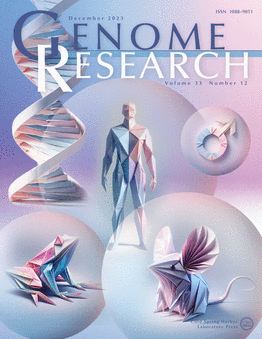一个优化的工具包,用于高分子量DNA提取和超长读取纳米孔测序使用玻璃珠和六考胺钴(III)氯化物
IF 6.2
2区 生物学
Q1 BIOCHEMISTRY & MOLECULAR BIOLOGY
引用次数: 0
摘要
自从长读序列出现以来,实现更长的读长度一直是许多用户的关键目标。超长读卡机(N50 >;近年来,牛津纳米孔测序仪生产的100 kb)改进了基因组组装。然而,尽管提取方案和文库制备方法取得了进展,但对于许多样品类型来说,超长测序仍然具有挑战性。在这里,我们比较了各种方法,并介绍了FindingNemo协议:(1)利用玻璃珠和六氯钴(CoHex)优化了超高分子量(UHMW) DNA提取和文库清理,(2)可以从单个MinION流式细胞获得20 Gb的高超长测序产量,或从PromethION设备(R9.4至R10.4孔变体)获得100 Gb的高超长测序产量,(3)可扩展到使用更少的输入细胞或更低的DNA量,在一个工作日内即可提取到测序。通过比较,我们证明该方案通过细胞计数、样品稀释和均质技术精确测定输入DNA的数量和质量,从而超越了以前的方法。本文章由计算机程序翻译,如有差异,请以英文原文为准。
An optimized toolkit for high molecular weight DNA extraction and ultra-long-read nanopore sequencing using glass beads and hexamminecobalt(III) chloride
Since the advent of long- read sequencing, achieving longer read lengths has been a key goal for many users. Ultra-long read sets (N50 > 100 kb) produced from Oxford Nanopore sequencers have improved genome assemblies in recent years. However, despite progress in extraction protocols and library preparation methods, ultra-long sequencing remains challenging for many sample types. Here we compare various methods and introduce the FindingNemo protocol that: (1) optimizes ultra-high molecular weight (UHMW) DNA extraction and library clean-up by using glass beads and Hexamminecobalt(III) chloride (CoHex), (2) can deliver high ultra-long sequencing yield of >20 Gb of reads from a single MinION flow cell or >100 Gb from PromethION devices (R9.4 to R10.4 pore variants), and (3) is scalable to using fewer input cells or lower DNA amounts, with extraction to sequencing possible in a single working day. By comparison, we demonstrate that this protocol surpasses previous methods by enabling precise determination of input DNA quantity and quality through cell counting, sample dilution, and homogenization techniques.
求助全文
通过发布文献求助,成功后即可免费获取论文全文。
去求助
来源期刊

Genome research
生物-生化与分子生物学
CiteScore
12.40
自引率
1.40%
发文量
140
审稿时长
6 months
期刊介绍:
Launched in 1995, Genome Research is an international, continuously published, peer-reviewed journal that focuses on research that provides novel insights into the genome biology of all organisms, including advances in genomic medicine.
Among the topics considered by the journal are genome structure and function, comparative genomics, molecular evolution, genome-scale quantitative and population genetics, proteomics, epigenomics, and systems biology. The journal also features exciting gene discoveries and reports of cutting-edge computational biology and high-throughput methodologies.
New data in these areas are published as research papers, or methods and resource reports that provide novel information on technologies or tools that will be of interest to a broad readership. Complete data sets are presented electronically on the journal''s web site where appropriate. The journal also provides Reviews, Perspectives, and Insight/Outlook articles, which present commentary on the latest advances published both here and elsewhere, placing such progress in its broader biological context.
 求助内容:
求助内容: 应助结果提醒方式:
应助结果提醒方式:


